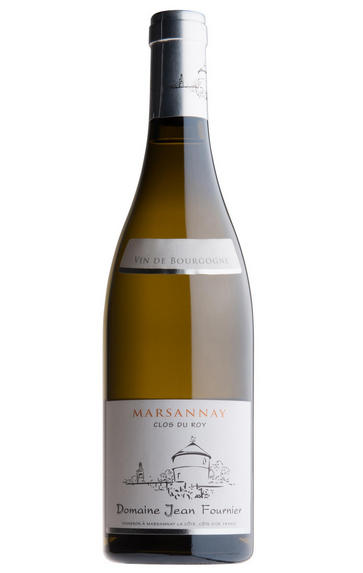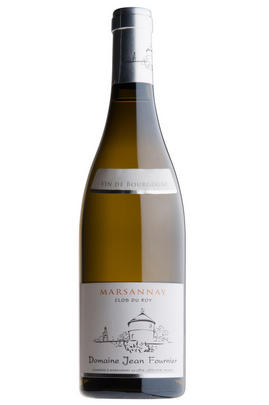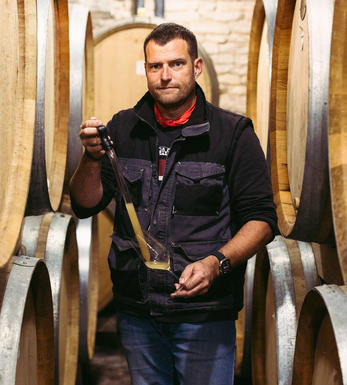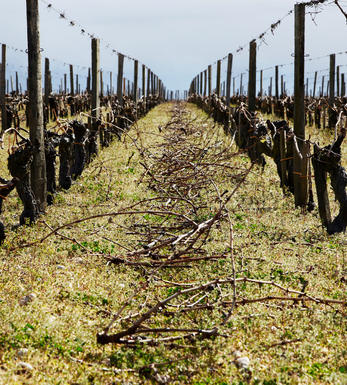
2021 Marsannay Blanc, Clos du Roy, Domaine Jean Fournier, Burgundy

Critics reviews
Drink 2024-2026
Jasper Morris, Inside Burgundy (January 2023)
About this WINE

Domaine Jean Fournier
Laurent Fournier has achieved a lot since taking charge of the domaine established by his father, Jean, in the 1960s. In 2011, he was voted the Cotes de Nuits’ young vigneron of the year. He has since dedicated much of his considerable energy campaigning to establish Premiers Crus in Marsannay. Although he has begun leasing parcels in the Côte de Beaune, Gevrey-Chambertin and Clos de Vougeot, Laurent’s heart remains in Marsannay. All of the vineyards are farmed organically, with certification.
For Laurent, the 2022 season wasn’t too complicated. He explained that the grapes perhaps ripened more through concentration than by traditional means because there was insufficient water. However, the vines did not appear to be struggling, with no loss of leaves or obvious signs of stress, as had been the case in 2019 and 2020. Laurent doesn’t subscribe to the theory that the vines are adapting, though he does find the wines surprisingly fresh, perhaps because more fertiliser is being used after several years when everyone ceased to do so. For him, 2022 is a vintage with excellent clarity of terroir expression.

Marsannay
Marsannay is the northern most wine village in the Côte de Nuits in Burgundy. Formerly known only for its rosé wine, Marsannay now has the appellation controlée for all three wine colours, though the white (Chardonnay) is rare. Vineyards now have to compete with the encroaching urban sprawl of Dijon.
- 312 hectares of village Marsannay red and a further 200 ha for Marsannay Rosé (Pinot Noir).
Marsannay is the only village-level appellation which may produce rosé wines, under the description Marsannay Rosé. - The AOC regulations allow up to 15 per cent total of Chardonnay, Pinot Blanc and Pinot Gris as supplementary grapes in the red wines. For white wines, both Chardonnay and Pinot Blanc are allowed, but the common practice is 100% Chardonnay.
Recommended Producers: Maison Camille Giroud Domaine Jean Fournier , Domaine de Montille

Chardonnay
Chardonnay is often seen as the king of white wine grapes and one of the most widely planted in the world It is suited to a wide variety of soils, though it excels in soils with a high limestone content as found in Champagne, Chablis, and the Côte D`Or.
Burgundy is Chardonnay's spiritual home and the best White Burgundies are dry, rich, honeyed wines with marvellous poise, elegance and balance. They are unquestionably the finest dry white wines in the world. Chardonnay plays a crucial role in the Champagne blend, providing structure and finesse, and is the sole grape in Blanc de Blancs.
It is quantitatively important in California and Australia, is widely planted in Chile and South Africa, and is the second most widely planted grape in New Zealand. In warm climates Chardonnay has a tendency to develop very high sugar levels during the final stages of ripening and this can occur at the expense of acidity. Late picking is a common problem and can result in blowsy and flabby wines that lack structure and definition.
Recently in the New World, we have seen a move towards more elegant, better- balanced and less oak-driven Chardonnays, and this is to be welcomed.


Buying options
Add to wishlist
Description
Fournier's Marsannay Blanc Clos du Roy would compete with many a grander wine from the Côte de Beaune. It is gently floral with a subtle mineral reduction and tense citrus fruit. There are layers of fruit and minerality here, along with some sophisticated reductive notes that point to a promising future. Drink 2024-2029.
wine at a glance
Delivery and quality guarantee